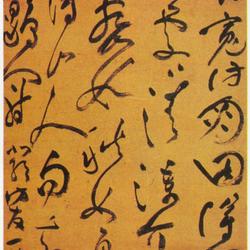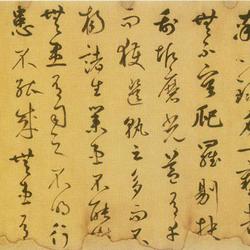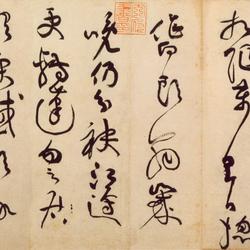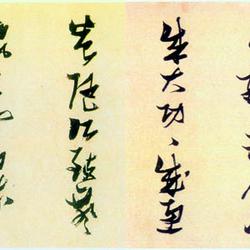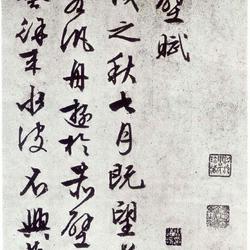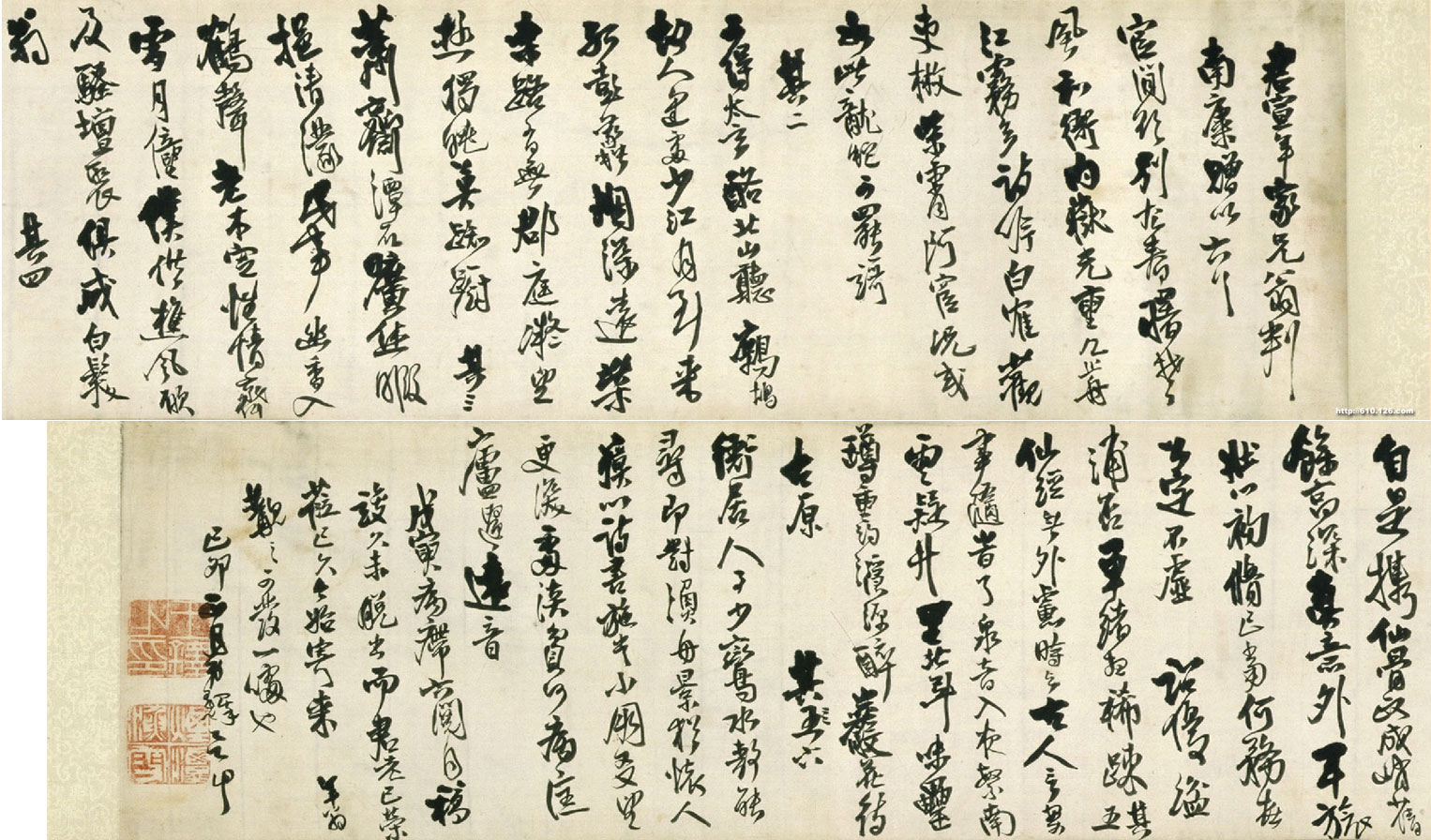
Wang Duo's Cursive Du Lü Juan (collected by Liaoning Provincial Museum) cursive plain silk edition (written at the age of fifty-five). Length 25.1cm, width 220.2cm.
The book was signed in the Bingxu year (the third year of Shunzhi in the Qing Dynasty, 1646), with thirty-eight lines and a total of 195 words.
Interpretation: (What is the limit to leaning against the mountain and chanting in the wood) The sound of autumn leaves and yellow cicadas collects in the ancient temple, the shadows of birds cross the cold pond, and the scenery. The sad wanderer comes to recall the assistant minister. The old man is greedy for Buddha. The old man sits casually in the monk's room, discussing life and death. He Yao sees a person. The sad king is walking away with the sparrow. The wind and dust in the valley were connected to the Han Dynasty; the other rivers did not tell the story to the Qin, Wuling, the eyes full of flowers, my hometown in the Spring and Autumn Period, the dawn was still in the windows, the trees were setting, the sky was windy, the sun was rising, the rivers were flowing outside the cold mountains (in the center of Cebu), there were no discarded things in the holy dynasty, the old and sick had become old, and there were many residual things. Wandering, let me go out of Shuanglin Pavilion on Zhuanpeng Road, peek into the river city in Wanjing, the lonely sun in the valley is far away, the wind is blowing, the soldier is dead, Lao Guanhe can't believe it, still a few lines of tears can't be tolerated, facing the hundreds of flowers, Bingxu, March night, rocks, Nao Tingwei, visiting, leisurely viewing the grand view. The second brother Zhong and Wang Duo were fifty-five years old when they wrote the beautiful poems of Xi Shuzi.
Volume of "Self-written Poems in Cursive Cursive", paper, length 26.9cm, width 166cm
Collection of the Palace Museum, Beijing
This volume contains six self-composed poems. The first inscription is "Junxuannian's brother Wengfen sent six poems to Nankang" and the last inscription is "Ji Mao's first month of the year and brother Wang Duo's grass". On the left are the seals "Wang Duo's Seal" and "Yantan Yusou". "Jimao" is the twelfth year of Chongzhen in the Ming Dynasty (1639), when Wang Duo was 47 years old. This painting has no hidden seal and no record.
The contemporary Ma Zonghuo Changyun said: "People in the Ming Dynasty all wrote in cursive writing in order to gain momentum. I think this means that the strokes are vertical and can be restrained. Therefore, if the momentum is not extreme but if the momentum is not exhausted, it is not easy to say this unless there is more than enough strength." Wang Duo The cursive writing is not heavy-handed, and the writing is smooth and natural. The calligraphy strokes in this volume are continuous. Although there are not many words connected together, the strokes are broken and the meaning is connected. The Qi is flowing through and the writing is smooth. This volume was written when Wang Duo was in his middle age, which was the period when his calligraphy style was forming. Therefore, it has a green and majestic style, "with the beauty of double wells and heaven", and is a typical work of Wang's middle age period.

